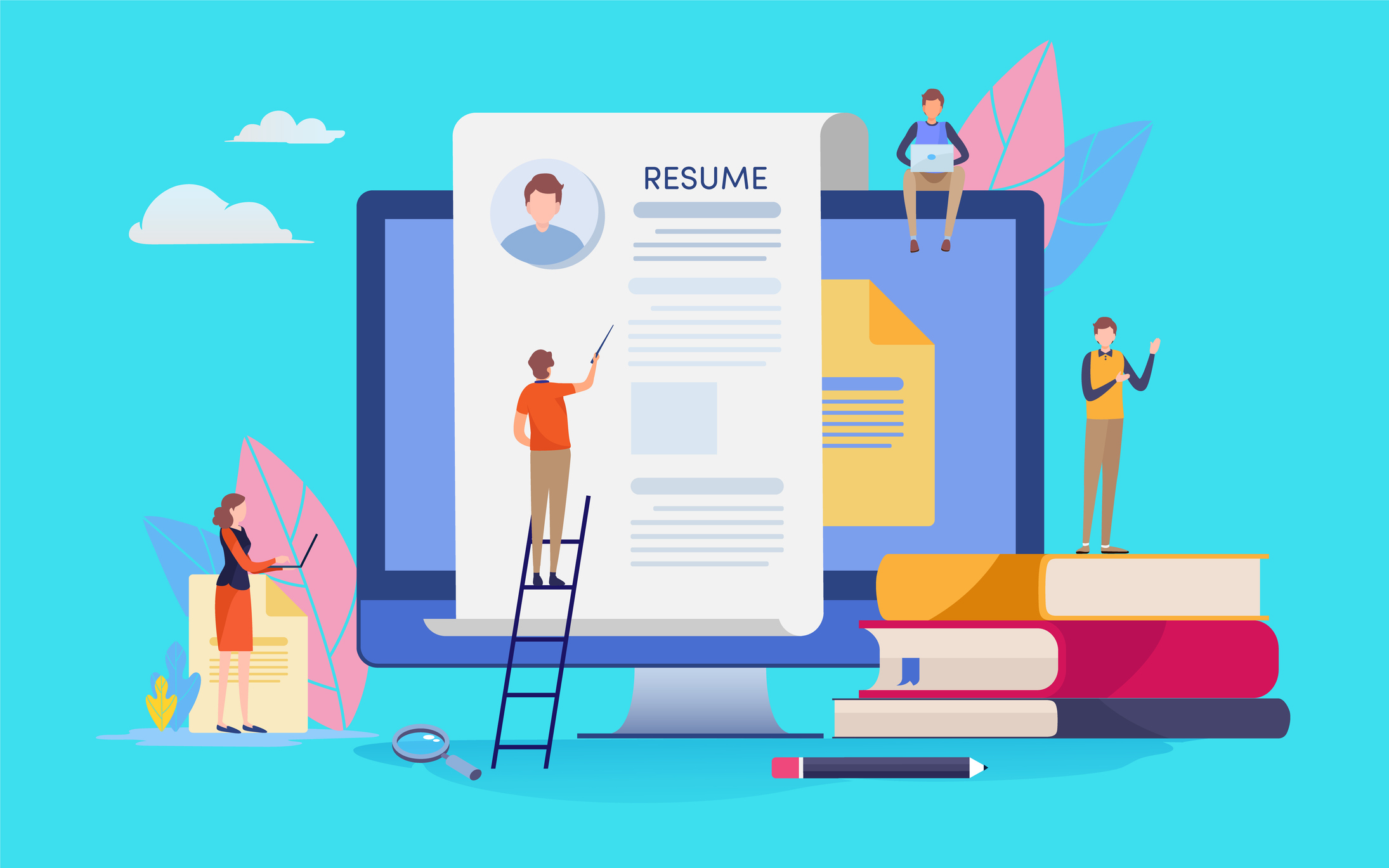
Ah yes, the age-old question.
When you’re starting to write a resume at the beginning of your career, it may be difficult to stretch your experiences to fit a full page. On the other hand, you may be well into your career and have difficulty deciding if you should stick to the classic one-page or make the jump to a two-page resume.
Thinking about polishing up an old resume? One of the easiest ways to do so is to take advantage of resume writing services. These services assist applicants with the creation and editing of professional resumes in order to properly showcase employment background and skills.
While everyone will have different circumstances, there is a standard rule you should try and always stick to.
For most applicants, a resume should be one page long. Depending on the level of experience, resumes can be 2+ pages when the said applicant has been in the workforce for ten or more years.
Crafting your resume takes time to get right and usually involves a couple of rough drafts before you are happy with the final product. Even after you land the job, you’ll need to update your resume as you make career changes and trying to squeeze your entire work history onto one page may not be feasible. Some questions can’t be answered simply. How long your resume should be is one of those questions.
In this article, we’ll cover everything you need to know about creating, crafting, updating, and formatting your resume.
Let’s get one thing out of the way:
Note: You do not need to limit yourself and cram 20+ years of work experience onto one page.
While students entering the workforce will have a one-page resume 99.9% of the time, workers far into their career may find it difficult to detail their responsibilities, past experience, and accomplishments onto one page when changing jobs.
Although we’ve been told that the one-page resume is the norm, that may not be the case anymore. According to a recent study that involved close to 500 recruiters, HR professionals, and hiring managers, recruiters are 2.3X as likely to prefer two-page resumes over one-page resumes.
So why the change?
A big factor in recruiters accepting resumes longer than one page is the increase in activities and experience of college students and recent graduates. Today’s young adults are more likely to enter the working world with more experience than generations past. From internships to freelancing, students are encouraged and more self-motivated to build their experience to fulfill the typical 1-3 years of experience that many entry-level jobs require.
On top of securing these opportunities, they’re also more likely to have online portfolios, participate in volunteer work or leadership programs, and involve themselves in campus activities to build their experience without having to fluff up their resume.
As we stated before, there are exceptions to every rule. Extending your resume to two pages is acceptable when you absolutely need to communicate key achievements, experiences, projects, and other relevant information. On the other hand, filling your resume with irrelevant responsibilities and information can put your application at risk of being placed in the “no” pile.
An example of someone who may need to have a two-page resume is a project manager (or most people who work in events). They are likely to have dozens of individual projects under their belt with a variety of standout accomplishments. If they decided to make a career change, the recruiter or hiring manager wouldn’t fault them for having a multiple page resume.
Resume length depends on the position you’re applying for. If you’re applying for a senior manager position that requires more experience, listing your past two positions will not be enough. Alternatively, if the position you’re applying for has a requirement of three years, detailing 15+ years of experience will not make sense.
In short, tailor the resume to the position and only list relevant experience.
If you’re applying for a position and still want to briefly mention roles you held that may not directly correlate to the job, including a career note or an earlier experience section at the top of your resume is a good option.
Including one of these gives you the ability to include experiences that are adjacent but not directly relevant to the position. The key is to keep the blurb short and sweet, excluding things like responsibilities and employment dates.
There are dozens of formatting options that people use to help you fit resume restrictions. If you’re finding it difficult to fit your experiences on one page, try tweaking the font size, shortening the spacing between paragraphs, and bump out the margins.
Note: Although you can find ways to squeeze as much information as possible onto one page, that doesn’t always mean you should. Only list relevant information and cut the rest out.
Standing out is a good thing, especially when you can’t be there when the hiring manager is taking in your entire work life in a matter of seconds. Customizing the look of your resume may not be the most important part of the job search, but it certainly can help.
Take a look at a sample resume.

The basic information is there but it doesn't have a lot of flair. It looks like a standard resume and nowadays, the more eye-catching your resume is, the better. Jamir went to a resume specialist and had it reformatted. Now, it looks like this.

Jamir’s original resume listed his experience but didn’t have much organization or personalization. The revamped resume is much more intriguing and will have a higher chance of catching a recruiter’s eye at first glance.
Keep it short and sweet. According to a study, recruiters and employers take about 6 seconds to look over a resume and decide if the applicant is a good fit. Instead of fleshing out all of your responsibilities, keep your job summaries to a few concise bullet points. Studying the job description and qualifications is also a great way to understand exactly what they’re looking for and what you should include in your resume. If they’re looking for an event coordinator, cutting out your years as a waitress is probably a safe bet.
To keep things even more condensed, use your cover letter to list basic information like education, contact information, and personality traits that will help you succeed on the job. By doing so, you save room on your resume to list only your most relevant skills.
If you can summarize your experience and accomplishments in one concise and powerful page, do it. The punchier you can make yourself sound, the better. Say you worked in sales and doubled revenue over four years. Summarizing that accomplishment in a short sentence will be impressive enough. No need to fluff it up.
Once you've updated your resume and are ready to look for the perfect job, you can also learn how to use LinkedIn for networking and career growth.
This article was originally published in 2019. It has been updated with new information.
Alexa is a former content associate at G2. Born and raised in Chicago, she went to Columbia College Chicago and entered the world of all things event marketing and social media. In her free time, she likes being outside with her dog, creating playlists, and dabbling in Illustrator. (she/her/hers)
Looking for a new job is hard, but writing your resume doesn’t have to be.
 by Lauren Pope
by Lauren Pope
Applicants have more ways to apply for jobs than ever before.
 by Kayla Matthews
by Kayla Matthews
Well, it’s finally happened. Bitmoji’s have made their way to corporate America.
 by Lauren Pope
by Lauren Pope
Looking for a new job is hard, but writing your resume doesn’t have to be.
 by Lauren Pope
by Lauren Pope
Applicants have more ways to apply for jobs than ever before.
 by Kayla Matthews
by Kayla Matthews


